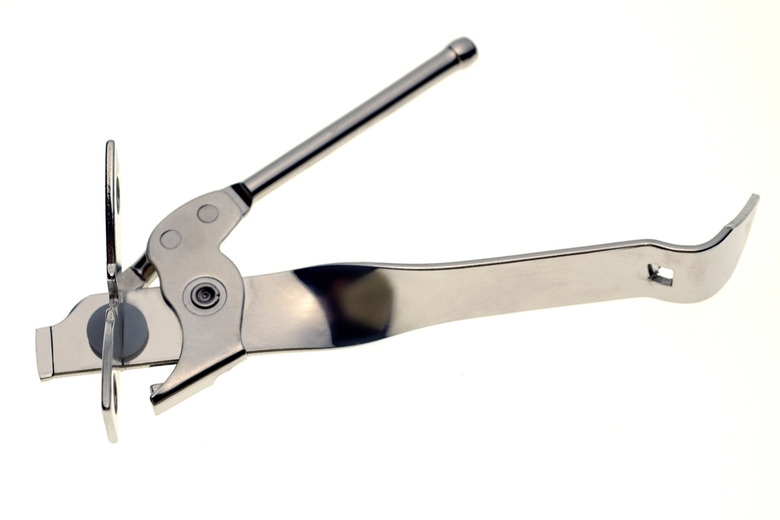Mechanism Description Of A Manual Can Opener
Manual can openers are simple machines when compared to electric can openers or other kitchen appliances. Although they are simple, they are not all created equal. Cheap can openers may be uncomfortable on the hand and difficult to use, while more expensive, better-made openers function smoothly and last for many years.
Handles
Handles
The body of a manual can opener consists of two handles connected with a single rivet or bolt, allowing them to be drawn apart and pushed together, pivoting on the point where they are joined. Higher-quality can openers have rubber grips on the handles, making them easier and more comfortable to grip.
Crank
Crank
A crank that can be turned by hand is attached to one of the handles. The axle of the crank goes through the handle and has the traction gear attached to the other side. When you use the can opener to open a can, you separate the handles of the opener, place the traction gear beneath the lip of the can and the cutting wheel above it, then bring the handles together, trapping the lip of the can between the traction gear and the cutting wheel. With the opener in this position, you can turn the crank to turn the traction gear and propel the cutting wheel around the rim of the can.
Traction Gear
Traction Gear
The traction gear is a small, round metal wheel with notches in it to increase its grip on the lip of the can. When it and the cutting wheel are pressed tightly against opposite sides of the lip of the can, the pressure against the surface of the traction gear causes it to grip the surface of the metal can when you turn the crank.
Cutting Wheel
Cutting Wheel
The cutting wheel has a sharp edge around its circumference. When you force the cutting wheel against the metal of the can by pushing the handles of the opener together, its sharp edge cuts through the metal. When you turn the traction gear by rotating the gear, the cutting wheel rotates as well, cutting through the metal as it advances around the lip of the can.
References
Cite This Article
MLA
Xaxx, Jagg. "Mechanism Description Of A Manual Can Opener" sciencing.com, https://www.sciencing.com/mechanism-description-of-a-manual-can-opener-12587926/. 21 July 2017.
APA
Xaxx, Jagg. (2017, July 21). Mechanism Description Of A Manual Can Opener. sciencing.com. Retrieved from https://www.sciencing.com/mechanism-description-of-a-manual-can-opener-12587926/
Chicago
Xaxx, Jagg. Mechanism Description Of A Manual Can Opener last modified March 24, 2022. https://www.sciencing.com/mechanism-description-of-a-manual-can-opener-12587926/
